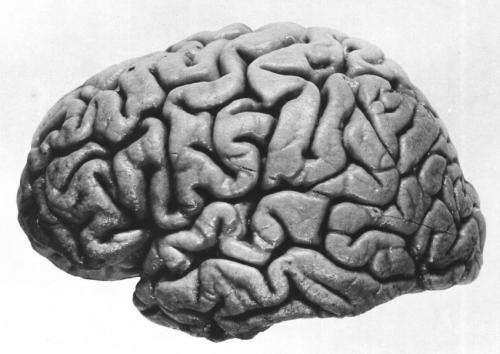Neuroscientists identify cell type in the brain that controls body clock circadian rhythms

UT Southwestern Medical Center neuroscientists have identified key cells within the brain that are critical for determining circadian rhythms, the 24-hour processes that control sleep and wake cycles, as well as other important body functions such as hormone production, metabolism, and blood pressure.
Circadian rhythms are generated by the suprachiasmatic nucleus (SCN) located within the hypothalamus of the brain, but researchers had previously been unable to pinpoint which of the many thousands of neurons in the region were involved in controlling the body's timekeeping mechanisms.
"We have found that a group of SCN neurons that express a neuropeptide called neuromedin S (NMS) is both necessary and sufficient for the control of circadian rhythms," said Dr. Joseph Takahashi, Chairman of Neuroscience and Howard Hughes Medical Institute (HHMI) Investigator at UT Southwestern, who holds the Loyd B. Sands Distinguished Chair in Neuroscience.
The findings, published in the journal Neuron, may offer important targets for future treatments of diseases and problems related to circadian dysfunction, which range from jet lag and sleep disorders to neurological problems such as Alzheimer's disease, as well as metabolism issues and psychiatric disorders such as depression.
Key studies in the 1970s revealed that the SCN communicates and coordinates cells throughout the body to control circadian rhythms, but the SCN contains many neurons with different expression patterns of neuropeptides and neurotransmitters.
"Which of these neurons are responsible for producing circadian rhythms was a major unanswered question in neurobiology. This study marks a significant advancement in our understanding of the body clock" said senior author Dr. Masashi Yanagisawa, Adjunct Professor of Molecular Genetics, former HHMI Investigator at UT Southwestern, and current Director of the World Premier International Institute for Integrative Sleep Medicine at the University of Tsukuba in Japan.
NMS is a neuropeptide - a protein made of amino acids that neurons, which are cells in the brain, use to communicate. Researchers created unique mouse models to determine that NMS-expressing neurons act as cellular pacemakers to regulate circadian rhythms. Specifically, the research team found that modulating the internal clock in just the NMS neurons altered the circadian period throughout the whole animal. In addition, the study provided new insights into the mechanisms by which light synchronizes body clock rhythms.
Dr. Takahashi identified and cloned the first mammalian gene—called Clock—related to circadian rhythms. Since then, the Takahashi lab has determined that disruptions in the Clock and Bmal1 genes in mice can alter the release of insulin by the pancreas, resulting in diabetes, and they determined the 3-D structure of the CLOCK-BMAL1 protein complex, which are considered to be the batteries of the biological clock.
Dr. Yanagisawa first identified the important role that endothelin plays on the cardiovascular system, and later, with his discovery of orexin, showed that sleep/wakefulness is controlled by a single neuropeptide. His lab has since identified numerous receptors involved in the regulation of appetite and blood pressure, as well as other neuropeptides that play an important role in the regulation of energy metabolism, stress responses, emotions, and other functions.

















